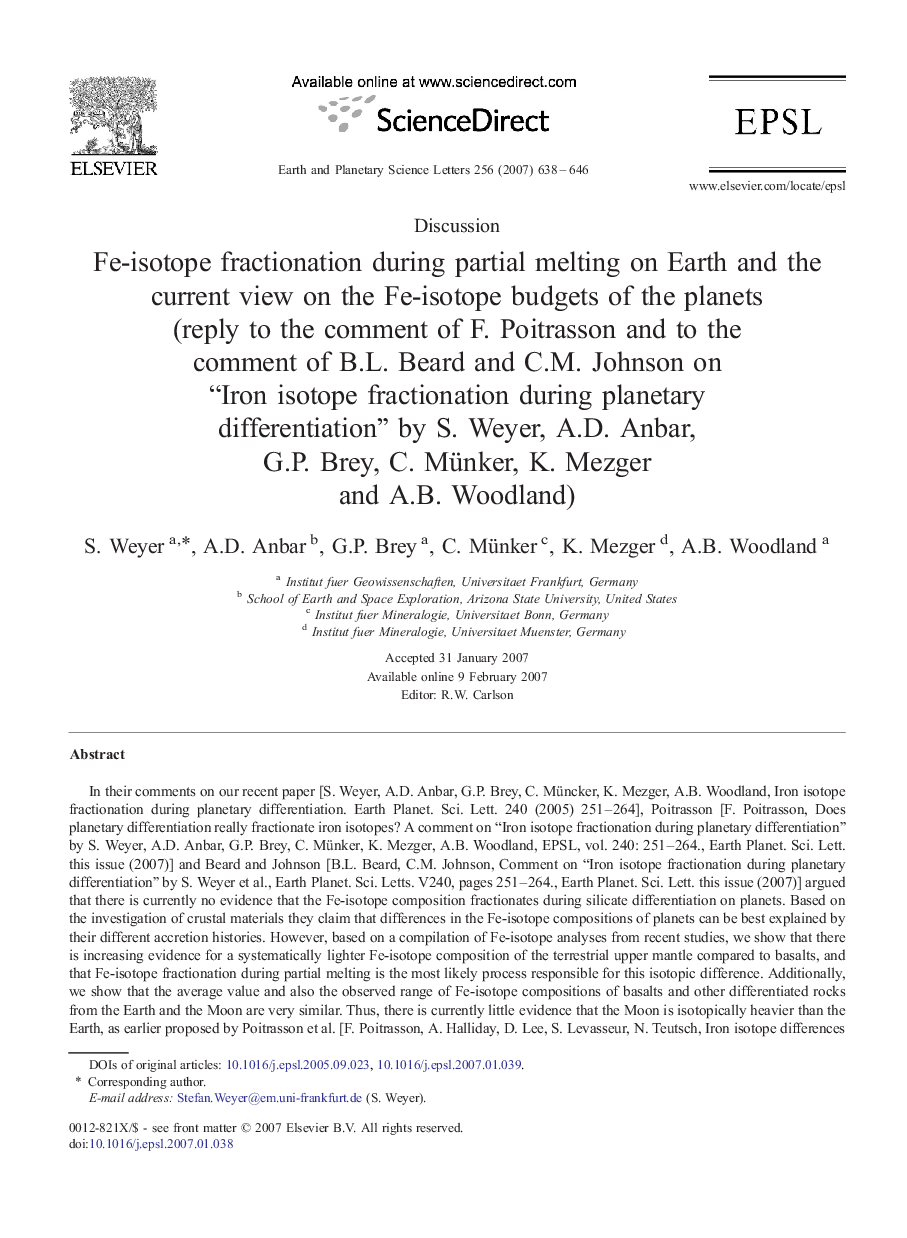| کد مقاله | کد نشریه | سال انتشار | مقاله انگلیسی | نسخه تمام متن |
|---|---|---|---|---|
| 4680608 | 1634922 | 2007 | 9 صفحه PDF | دانلود رایگان |

In their comments on our recent paper [S. Weyer, A.D. Anbar, G.P. Brey, C. Müncker, K. Mezger, A.B. Woodland, Iron isotope fractionation during planetary differentiation. Earth Planet. Sci. Lett. 240 (2005) 251–264], Poitrasson [F. Poitrasson, Does planetary differentiation really fractionate iron isotopes? A comment on “Iron isotope fractionation during planetary differentiation” by S. Weyer, A.D. Anbar, G.P. Brey, C. Münker, K. Mezger, A.B. Woodland, EPSL, vol. 240: 251–264., Earth Planet. Sci. Lett. this issue (2007)] and Beard and Johnson [B.L. Beard, C.M. Johnson, Comment on “Iron isotope fractionation during planetary differentiation” by S. Weyer et al., Earth Planet. Sci. Letts. V240, pages 251–264., Earth Planet. Sci. Lett. this issue (2007)] argued that there is currently no evidence that the Fe-isotope composition fractionates during silicate differentiation on planets. Based on the investigation of crustal materials they claim that differences in the Fe-isotope compositions of planets can be best explained by their different accretion histories. However, based on a compilation of Fe-isotope analyses from recent studies, we show that there is increasing evidence for a systematically lighter Fe-isotope composition of the terrestrial upper mantle compared to basalts, and that Fe-isotope fractionation during partial melting is the most likely process responsible for this isotopic difference. Additionally, we show that the average value and also the observed range of Fe-isotope compositions of basalts and other differentiated rocks from the Earth and the Moon are very similar. Thus, there is currently little evidence that the Moon is isotopically heavier than the Earth, as earlier proposed by Poitrasson et al. [F. Poitrasson, A. Halliday, D. Lee, S. Levasseur, N. Teutsch, Iron isotope differences between Earth, Moon, Mars and Vesta as possible records of contrasted accretion mechanisms. Earth Planet. Sci. Lett. 223 (2004) 253–266]. However, most likely the crust of the Earth and the Moon is isotopically heavier than that of Mars and the HED parent body. From our current stage of knowledge it is difficult to decide if the different crustal values mirror bulk planetary differences, differences in the silicate portion of the planets or differences in isotope fractionation during partial melting among planets.
Journal: Earth and Planetary Science Letters - Volume 256, Issues 3–4, 30 April 2007, Pages 638–646